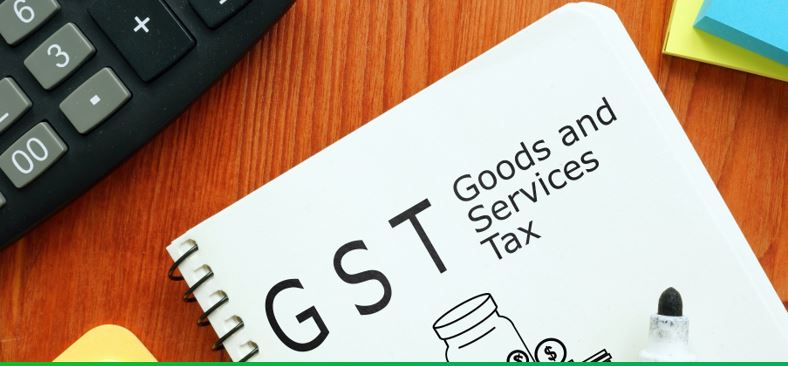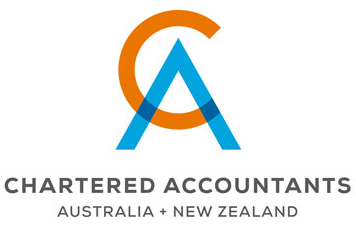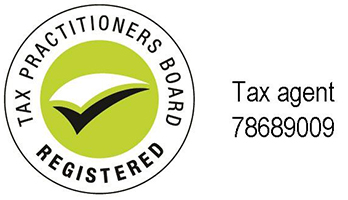TaxWise Business News – November 2025

What’s New?
Small Business Instant Asset Write-Off
A Bill before Parliament will extend the $20,000 instant asset write-off for another year until 30 June 2026. The instant asset write-off is available to a small business (annual aggregated turnover under $10 million) that uses the simplified depreciation rules.
This means that if your business qualifies for the instant asset write-off, it can deduct in the current income year (2025-26) the full cost of an eligible depreciating asset costing less than $20,000 if it is first used, or installed ready for use, before 1 July 2026. This also applies to additional expenditure under $20,000 (incurred before 1 July 2026) on an existing depreciating asset.
Other consequences of this measure are:
- the low value pool threshold is extended for a further 12 months until 30 June 2026 – this means that if the value of the general small business pool (at the end of the 2025-26 income year) is less than $20,000, it can be written off in full; and
- the “lock-out” rule is suspended for a further 12 months until 30 June 2026 – this rule prevents a small business that stops using the simplified depreciating rules from using those rules again for 5 years.
Tip! Talk to your tax adviser if your business intends to acquire a depreciating asset or spend money on an existing asset.
Payday Super
From 1 July 2026, employers will be required to pay their employees’ superannuation guarantee (SG) at the same time as their salary and wages. This is called “Payday super”. Legislation to implement the “Payday super” regime was recently introduced into the Parliament.
The key reforms are:
- employers must pay SG at the same time as salary and wages;
- SG contributions will generally need to reach employees’ super funds within 7 business days;
- a new concept called “qualifying earnings” (QE) will be used to calculate both SG contributions and the SG charge;
- the deadline for super funds to allocate or return contributions that cannot be allocated will be reduced to 3 business days, down from 20;
- ATO systems will be improved to include faster payments and new services, like the Member Verification Request, that will help reduce the likelihood of rejected contributions;
- the Small Business Superannuation Clearing House (SBSCH) will be closed to new registrants from 1 October 2025, and all users from 1 July 2026; and
- employers will need to report both QE and Super Liability via Single Touch Payroll (STP).
The ATO has published draft guidance on its compliance approach for employers for the first year of Payday super. The draft guidelines set out the factors the ATO will consider when deciding how to apply compliance resources to investigate employers in relation to the first year of Payday Super.
The proposed compliance approach will recognise that employers who try to do the right thing from 1 July 2026 to 30 June 2027, and resolve any issues quickly, should not be the focus of ATO compliance action.
Tip! Talk to your tax adviser as soon as possible about the Payday super reforms and how they will affect your business. 1 July 2026 isn’t that far away!
GST Measures
A Bill before Parliament will make it easier to claim input tax credits (ITCs) that were inadvertently overlooked from an earlier tax period and implement other GST simplification measures.
The Bill if passed will allow a taxpayer to choose to attribute the ITCs to the earlier correct tax period or to a later one. However, it will still be subject to the usual four-year limitation period, so ITCs can only be claimed in a later tax period if it is within four years from when the correct GST return should have been lodged.
The shortfall interest charge (SIC) and the general interest charge (GIC) are no longer tax deductible, if they are incurred on or after 1 July 2025.
Broadly, the SIC may be imposed when an income tax assessment is amended, resulting in an increased tax liability, and the GIC may be imposed if a tax debt is overdue. The new rules denying a deduction for SIC and GIC apply to interest incurred after 1 July 2025, even if the tax debt arose before that date.
Public Register for Unlisted Companies
The Government has announced that it will develop a public, Commonwealth-operated register of beneficial ownership information for unlisted companies.
The intention is to improve awareness of who ultimately owns, controls or receives profits from a company or legal vehicle operating in Australia. The Government will seek to develop the public ownership register in conjunction with ASIC’s current work on its own companies register, the capacity of which is being increased.
The media release (from the Assistant Minister for Productivity, Competition, Charities and Treasury) states that the Government will engage with stakeholders to further progress detailed policy development work on the beneficial ownership register from early 2027, with public consultation expected thereafter.
Note that there is legislation currently before Parliament which will enhance the beneficial ownership disclosure obligations that currently apply to listed entities.
Super Reforms
You may have been aware that the Government had proposed a 15% tax rate on earnings attributable to the part of an individual’s total superannuation balance (TSB) that exceeds, as at the end of a financial year, $3 million. The 15% rate (called Div 296 tax) would be in addition to the existing 15% tax rate. The reforms were proposed to start from 1 July this year.
The Government has decided to make changes to the proposed Div 296 tax. The key changes are:
- the $3 million threshold will be indexed to the Consumer Price Index (in $150,000 increments);
- Div 296 tax will not apply to unrealised gains;
- an additional tax rate of 10% (ie in addition to the 30% rate) will apply to TSBs that exceed $10 million; and
- the start date will be 1 July 2026.

ATO Compliance Activities
Small Business Tax Risks
The ATO is focusing on small businesses in:
- the property and construction industry – including builders, contractors and tradies; and
- the professional, scientific and technical services sector – such as engineering, design, IT, management and consulting professionals.
Common errors in these industries include:
- incorrect claims for the R&D tax incentive, especially for activities that do not meet the eligibility criteria;
- omitting sales and income in the BAS and tax returns, including income from related entities;
- overclaiming expenses and GST credits;
- private expenses incorrectly reported as business-related, or not properly apportioned between business and personal use;
- failure to register for GST when required; and
- not seeking independent advice from a registered tax agent, particularly in head contractor and subcontractor arrangements.
Tip! Tax can be complicated. Talk to your tax adviser about your business’ tax position.
Small Business Benchmarks
The ATO publishes small business benchmarks that help you compare your business’ performance against similar businesses in the same industry.
Performance benchmarks are financial ranges for your industry. They help you work out how your business compares to other businesses and decide if you need to make any changes. Performance benchmarks apply to 100 industries.
Performance benchmarks include tax return benchmark ranges from information provided by businesses on their tax returns. These include:
- cost of sales to turnover (excluding labour);
- total expenses to turnover;
- labour to turnover;
- rent to turnover; and
- motor vehicle expenses to turnover.
The ATO uses benchmarks and other risk indicators to identify businesses that may be avoiding their tax obligations by not reporting some of their income or overclaiming deductions.
The ATO compares information reported in business tax returns with the key performance benchmark for their industry. Their industry is based on:
- business industry codes;
- the description of the main business activity on their tax return; and
- the business’ trading name.
When the ATO chooses to investigate a business’ tax records, it uses a wide range of factors. The ATO says that it never uses the benchmarks in isolation when deciding to review a business or when looking at the business’ records.
Example: identifying a business outside of the benchmark.
A supermarket operator was selected for audit due to several issues identified through the ATO’s risk modelling. When looking at the small business benchmarks, their cost of sales to turnover ratio was 88%. This was high compared to the key benchmark range of 71% to 77% in their industry.
During the audit, tax officers found the business directors had been operating for several years without reconciling their sales and banking records. This resulted in under reported sales.
They submitted a voluntary disclosure, which usually means the ATO would reduce administrative penalties and interest charges. However, following a review of banking records, tax officers found the amount disclosed did not match, so it was not accepted.
Given the length of time the owners had been in business and their level of experience (they were also co-directors of another company), it was reasonable to expect them to keep correct records. They were required to pay over $275,000 in tax and $44,000 in penalties.
Tax Tips for Sole Traders
The ATO has outlined some common errors made by sole traders:
- not reporting all income – this includes income earned outside your business (like a side hustle), cash jobs or payments in-kind/barter deals (like the value of goods or services received in exchange for your work);
- over-claiming expenses – this includes claiming the portion of an expense related to personal use or overstating the cost of goods sold and other business expenses;
- calculating business losses;
- incorrectly claiming and offsetting losses from non-commercial business activities against other income sources;
- claiming PAYG withholding refunds;
- misreporting personal services income (PSI) to gain tax benefits;
- not registering for GST (for example, sole traders in the taxi or ride-sourcing industry); and
- not keeping accurate and complete records.
Tip! If you are a sole trader, your tax adviser can help you avoid those common errors.
Private Groups: What’s On the ATO’s Radar
The ATO refreshed its areas of focus for privately owned and wealthy group to reflect its priorities for 2025-26.
This year the ATO is paying close attention to:
- the use of business money for personal or other group purposes, with a particular focus on Division 7A arrangements and the tax treatment of lifestyle assets;
- the tax consequences of succession planning activities, including where private groups restructure, dispose of assets, transfer wealth or implement arrangements aimed at minimising or avoiding tax – the ATO is focused on ensuring private groups understand the tax implications of the decisions they make;
- tax risks arising from specific industries or activities such as property and construction, private equity and international dealings; and
- ensuring compliance with core tax obligations, including correctly reporting income, sales, capital gains, meeting eligibility requirements for concessions or entitlements claimed and timely lodgment of returns and schedules and payment of tax debts.

Other ATO Information
Loans and Other Payments from Your Company
TaxWise often mentions Division 7A. That is because Division 7A is one of the most significant tax measures affecting private companies and their shareholders. The ATO recognises this as it regularly updates information on its website.
What does Division 7A do? Very broadly, if a private company makes a payment or loan to a shareholder or forgives a debt owed by a shareholder, the amount of the payment, loan or forgiven debt may be treated as a deemed dividend in the hands of the shareholder. The deemed dividend (a Division 7A dividend) will be taxable and generally cannot be franked so the recipient will not be entitled to a tax offset in relation to the dividend.
A payment includes the provision of an asset for use by a shareholder or their associate or a right to use assets under a licence or lease.
The rules also apply where the payment or loan is made to, or the forgiven debt is owed by, an associate of a shareholder.
The total of all deemed dividends that a private company is taken to pay under Division 7A is limited to its “distributable surplus” for the income year. There is a formula to work out the distributable surplus. A company’s distributable surplus is not necessarily the same as its retained earnings.
Trusts
Division 7A applies to certain payments, loans and debt forgiveness made by trustees to a shareholder or an associate of a shareholder of a private company, where:
- the company is presently entitled to an amount from the net income of the trust estate; and
- the whole of that amount has not been paid by a specified date.
This is called an unpaid present entitlement (UPE). However, the rules do not apply in all cases where there is an UPE. For 15 years or so, the ATO has generally treated an UPE as a loan for Division 7A purposes. However, as previously advised in TaxWise, the High Court will be ruling on this issue in due course. The Full Federal Court (and earlier the Administrative Appeals Tribunal) effectively concluded that the ATO’s position is wrong.
Guarantees
Division 7A can apply to arrangements that involve a private company indirectly distributing money to a shareholder (or an associate of a shareholder) by guaranteeing a loan that an interposed private company or other entity makes to the shareholder or their associate. This can include more complex arrangements that involve a guarantee and loans or payments through a chain of entities.
The circumstances where Division 7A can apply are:
- a private company guarantees a loan made by an interposed entity – the ATO considers that the interposed entity can be a bank or other financial institution and need not be another private company;
- a reasonable person would conclude that the private company gave the guarantee solely or mainly as part of an arrangement involving a payment or loan to the target entity; and
- either, as a result of the guarantee, the private company has a liability (other than a contingent liability) to make a payment to the interposed entity or an interposed private company makes a payment or loan to the target entity (there can be more than one interposed entity).
It does not matter whether or not a present liability ever arose under the guarantee.
Exemptions
There are a number of situations where Division 7A does not apply. These include:
- distributions that form part of the recipient’s assessable income;
- the private use of a dwelling connected with a business, for example, a farmhouse on a farm;
- loans in the ordinary course of business on arm’s length terms;
- loans that satisfy the relevant minimum interest rate (8.37% for 2025-26) and maximum term (25 years if the loan is secured by a registered mortgage, otherwise 7 years); and
- loans to another company.
ATO’s Discretion
The ATO has a discretion to disregard the operation of Division 7A or to allow a Division 7A dividend to be franked if the failure to comply with Division 7A was the result of an honest mistake or an inadvertent omission.
The ATO also has the discretion in certain circumstances to not treat a payment, loan or debt forgiveness as a Division 7A dividend, for example:
- where the failure by an entity to make the specified minimum yearly repayment in relation to an amalgamated loan (one where a private company makes multiple loans to an entity during an income year) was because of circumstances beyond the entity’s control, and the entity would suffer undue hardship if the loan was taken to be a Division 7A dividend; or
- where payment of a debt that is forgiven would cause hardship.
Tip! If you operate your business through a private company, talk to your tax adviser before taking any steps, such as borrowing money from the company, that might activate Division 7A.

Private Use of Work Vehicles
A common perk offered by employers is personal use of work vehicles. Yet, this may be a “fringe benefit” and could result in a fringe benefits tax (FBT) liability for your business.
When Does Private Use Attract FBT?
FBT generally applies when a work vehicle is made available for private use – even if it is not actually used. Private use includes any travel not directly related to the employee’s job, such as:
- taking the vehicle on beach or camping trips;
- school drop-offs and pick-ups (even if it is on the way to or from work);
- running personal errands (like picking up groceries);
- transporting friends or family for non-work-related purposes; and
- parking the vehicle at the employee’s home (even if only for security reasons).
The records your business needs to keep depend on which method is used to calculate the taxable value of car fringe benefits provided to employees, but may include logbooks and odometer readings. Even if the benefit is exempt from FBT because of limited private use, your business needs to keep records to support this.
Exemptions
Exemptions may apply depending on the vehicle’s specifications and the nature of the private use. Exemptions include:
- private work-related travel in an eligible commercial vehicle such as a single cab ute, a dual cab ute (see more below), a panel van, a goods van, a taxi not on hire or any other road vehicle that is designed to carry either a load of 1 tonne or more than 8 passengers (including the driver);
- the vehicle is an eligible electric car;
- the benefit is minor – that is, the taxable value of the benefit is less than $300 and it would be considered unreasonable to treat it as a fringe benefit;
- the employee’s duties relate to a public hospital, unless the amount of benefit provided to the employee exceeds the relevant threshold ($17,000);
- the car is provided for compassionate travel.
Common FBT Mistakes to Avoid
The most common issues the ATO sees are:
- incorrectly treating private use as business use;
- assuming dual cab utes are exempt from FBT – more on this below;
- incorrectly classifying vehicles;
- poor record keeping that does not support the claims or FBT calculations made; and
- not reporting or paying on time.

Dual Cab Utes and FBT
There is a common myth that dual cab utes are automatically exempt from fringe benefits tax (FBT). However, that is not the case.
If your business provides dual cab utes to staff to complete their duties and the vehicle is available for personal use, then the benefit may be subject to FBT. By understanding how your employees use their dual cab utes, you can work out if FBT applies.
When FBT Doesn’t Apply
To qualify for an exemption, 2 conditions must be met. The dual cab ute must be:
- an eligible vehicle, which means it is designed to (a) carry a load of one tonne or more, (b) more than 8 passengers (including the driver) or (c) a load under one tonne and not primarily designed for carrying passengers; and
- only used for limited private use (ie minor, infrequent and irregular), such as the occasional trip to the tip or helping a mate move house.
So, if a work dual cab ute doubles as the family taxi or is regularly used for weekend personal trips, it is not exempt.
When FBT Applies
If an employee’s personal use does not meet both exemption conditions, your business will be liable for FBT. You must ensure your business keeps accurate records – even if the benefit is exempt from FBT because of limited private use, your business needs to keep records to support this.
Don’t forget to report the reportable fringe benefits on each employee’s income statement or payment summary.
Tip! Talk to your tax adviser if your business provides any benefits to employees, such as the private use of a work vehicle, car parking, subsidised public transport, childcare and loans at a discounted interest rate.
Entertaining Your Employees?
With the festive season approaching, you may be planning a party or similar event (eg a bowls day) for your employees. If so, make sure you consider the fringe benefits tax (FBT) implications of the party or other event.
These will depend on:
- the amount spent on each employee;
- when and where the event is held;
- the value and type of gifts provided; and
- who attends – is it just employees or are partners, clients and/or suppliers also invited?
Don’t forget to keep all records relating to the entertainment-related fringe benefits your business provides, including how the taxable value of benefits is worked out.
Tip! Talk to your tax adviser to discuss any FBT implications of a staff event such as a Christmas party.
Varying Your PAYG Instalments
If you are a pay as you go (PAYG) instalment amount payer, your instalments have been increased by the gross domestic product (GDP) adjustment factor. For the current income year (2025-26), the GDP adjustment factor is 4%.
You can vary your PAYG instalments if you think your current instalments will be more or less than your expected tax liability for the year. Your varied amount or rate will apply for the remainder of your income year or until you make another variation. You or your tax adviser can lodge your variation online.
Businesses are encouraged to review their tax position regularly, so that their PAYG instalments reflect their expected tax for the year.

GST and Vouchers
A voucher:
- is a token, stamp (not a postage stamp), coupon or similar article, such as a physical card or digital gift or retail store voucher, or a prepaid phone card or facility;
- has a stated monetary value; and
- may be redeemed for goods or services.
There are 2 types of vouchers: face value vouchers and non-face value vouchers.
How GST Applies to Vouchers
A face value voucher can be redeemed for a reasonable choice of goods and services. An example would be a $50 voucher issued by a supermarket that allows voucher holders to redeem products at any of its different stores.
When selling a face value voucher, your business only accounts for GST when the voucher is redeemed for taxable goods and services, not at the time when the voucher is sold. This is because the sale of a face value voucher for an amount not exceeding its face value is not a taxable supply.
If you sell a face value voucher for an amount exceeding its face value (such as selling a $100 voucher for $105), you need to account for GST on the amount exceeding the face value at the time when it is sold.
Your business will need to make an increasing adjustment on your business activity statement (BAS) when it has sold a face value voucher and:
- the voucher has expired or has not been fully redeemed; and
- your business has written back to current income any reserves for the redemption of the voucher for accounting purposes.
The increasing adjustment is 1/11th of the unredeemed balance. A non-face value voucher can only be redeemed for specific goods and services. An example would be a $100 voucher for a facial treatment at a day spa.
Your business needs to account for GST at the time it sells a non-face value voucher, but only if it is redeemable for taxable supplies.
There is no need to account for GST when the voucher is redeemable for input taxed or GST-free supplies.
Reporting Voucher Sales
If your business sells a face value voucher, it does not account for the sale on its BAS until it is redeemed.
When it is redeemed in full for goods or services your business sells, the payment for the sale is the stated monetary value of the voucher plus any additional payment received.
For a non-face value voucher, your business accounts for the sale on its BAS in the reporting period when it is sold.
Claiming Credits for Purchases Using Vouchers
If your business buys a voucher and uses it to get something that is a taxable supply, your business is entitled to claim a GST credit if that purchase is used in its business.
For a face value voucher, your business claims GST credits in its BAS for the reporting period it is redeemed, not the reporting period when it is bought.
For a non-face value voucher, your business claims GST credits in its BAS for the reporting period when the voucher is bought.
Your business cannot claim a GST credit for the purchase if it relates to making input taxed sales or is of a private or domestic nature.
Key Tax Dates
| Date | Obligation |
| 21 Nov 2025 | Lodge and pay October monthly BAS |
| 28 Nov 2025 | Lodge and pay September quarterly SGC (if required) |
| 1 Dec 2025 | Full self-assessment companies – pay 2024-25 income tax Non-full self-assessment companies – lodge 2024-25 return |
| 22 Dec 2024* | Lodge and pay November monthly BAS |
| 21 Jan 2026 | Lodge and pay December monthly BAS |
| 28 Jan 2026 | Super guarantee payment due date for December quarter |
| 2 Feb 2026* | Closely held trust – lodge December quarterly TFN report |
| 23 Feb 2026* | Lodge and pay January monthly BAS |
| 2 Mar 2026* | Lodge and pay December quarterly BAS Pay second quarterly PAYG instalment for 2025-26 Lodge annual GST return (if no tax return due) Lodge and pay December quarterly SGC (if required) Lodge and pay SMSF annual return for new SMSFs (unless otherwise advised) |
*This is the next business day as the due date falls on a Sunday.
Note! Talk to your registered tax agent to confirm the correct due dates for your own tax obligations. For example, you may have more time to lodge and pay if impacted by a natural disaster.

